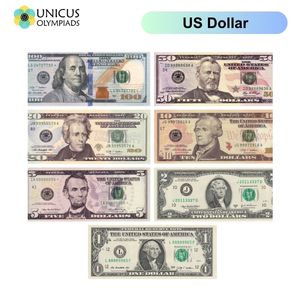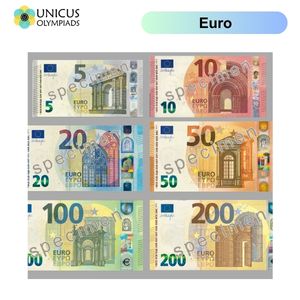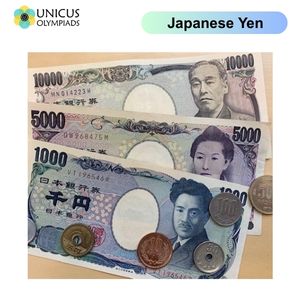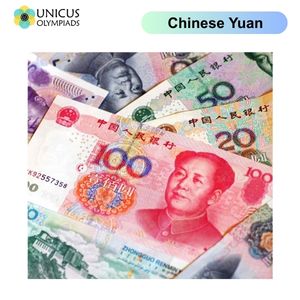What Currencies Do Countries Use, and How Are Dollars, Euros, or Yen Used Globally?
Currency is a system of money used in a particular country or region. Different countries have their own currencies, some of which are widely used internationally. The most well-known currencies include the US dollar, the euro, the Japanese yen, and the Chinese yuan, which are traded in global markets and accepted in many countries. In this article, we explore the currencies of 20 important countries around the world and how major currencies like dollars, euros, yen, and yuan are used globally.
Currencies of Important Countries
Here is a list of 20 countries and their official currencies:
- United States: US Dollar (USD) - Used globally as the world’s primary reserve currency and widely accepted for international trade.
- Eurozone Countries: Euro (EUR) - The official currency of the European Union, used by 19 of the 27 EU member countries. The euro is one of the most traded currencies in the world.
- Japan: Japanese Yen (JPY) - Used in Japan and is the third most traded currency globally.
- United Kingdom: Pound Sterling (GBP) - Commonly known as the British pound, it is used in the United Kingdom and is one of the oldest currencies still in use.
- Australia: Australian Dollar (AUD) - Used in Australia, it is a major currency in the Asia-Pacific region.
- Canada: Canadian Dollar (CAD) - Used in Canada and widely traded in global markets, especially in commodities.
- Switzerland: Swiss Franc (CHF) - Known for its stability, it is widely used in international banking and finance.
- China: Chinese Yuan (CNY) - Also known as Renminbi, it is becoming increasingly important in international trade and is one of the most traded currencies globally.
- India: Indian Rupee (INR) - Used in India and the largest economy in South Asia.
- Brazil: Brazilian Real (BRL) - The official currency of Brazil, the largest economy in South America.
- South Africa: South African Rand (ZAR) - Used in South Africa and widely traded in Africa.
- Mexico: Mexican Peso (MXN) - Used in Mexico and is one of the most traded currencies in Latin America.
- Russia: Russian Ruble (RUB) - Used in Russia and former Soviet republics, the ruble is one of the main currencies in Eastern Europe.
- Singapore: Singapore Dollar (SGD) - Used in Singapore and one of the most traded currencies in Southeast Asia.
- Saudi Arabia: Saudi Riyal (SAR) - The currency of Saudi Arabia and one of the most important currencies in the Middle East, especially due to oil trade.
- Sweden: Swedish Krona (SEK) - The official currency of Sweden, widely used in Scandinavia.
- South Korea: South Korean Won (KRW) - The official currency of South Korea, a major economy in East Asia.
- Argentina: Argentine Peso (ARS) - The official currency of Argentina, commonly used in South America.
- Turkey: Turkish Lira (TRY) - Used in Turkey and the Turkish Republic of Northern Cyprus, one of the main currencies in the Middle East.
- Indonesia: Indonesian Rupiah (IDR) - The official currency of Indonesia, the largest economy in Southeast Asia.
- Egypt: Egyptian Pound (EGP) - The currency of Egypt, widely used in North Africa and the Middle East.
The Role of Major Currencies Globally
Some currencies, such as the US dollar, the euro, the Japanese yen, and the Chinese yuan, play a major role in international trade, investment, and foreign exchange markets. Here’s how they are used globally:
1. US Dollar (USD)
- The US dollar is the most widely used currency in global trade and finance.
- It serves as the primary reserve currency for central banks around the world, with approximately 60% of global foreign exchange reserves held in dollars.
- It is used in international transactions, commodities trading (such as oil), and is the standard currency for global banking systems.

2. Euro (EUR)
- The euro is the official currency of 19 European Union countries and is used in daily transactions across Europe.
- It is the second most traded currency in the world, behind the US dollar, and is used for intra-European trade.
- The euro is a key reserve currency and plays a significant role in the international financial market.

3. Japanese Yen (JPY)
- The Japanese yen is one of the most traded currencies in the world, primarily used in Asia and in global markets for financial transactions.
- It is often used as a safe-haven currency, meaning that it tends to appreciate in times of global financial instability.

4. Chinese Yuan (CNY)
- The Chinese yuan, or Renminbi, is becoming one of the most important currencies in global trade, especially as China continues to grow as a major economic power.
- The yuan is used in trade agreements, and China’s increasing influence in the global economy has led to greater acceptance of the yuan in international markets.
- The People's Bank of China has also been pushing for the yuan to be included in global reserves, leading to greater international usage.







